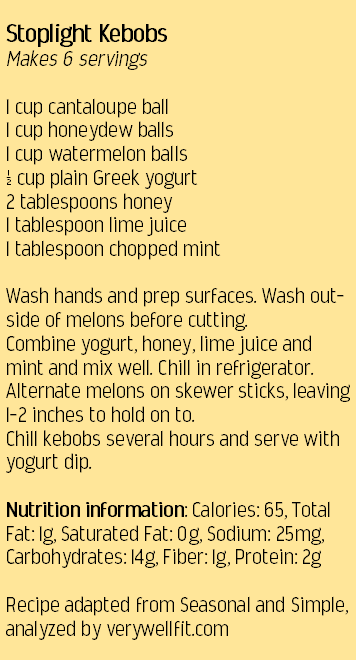|
 Denise Sullivan, MS, CWP, CNWE, Nutrition and Health Education Field Specialist, University of Missouri Extension A favorite fruit from my childhood that my mother grew in her garden that I’ve never had much luck with is cantaloupe. I don’t know if it was the variety she grew or if there was something magical about the soil, but my mom could grow the biggest, sweetest cantaloupe that I had ever seen. Or was is muskmelon, as my grandmother called it?
As a young child, this confused me! As it turns out, both my mom and grandmother were right, but my grandmother was more right! All cantaloupes are muskmelons, but not all muskmelons are cantaloupes. A true cantaloupe has a warty looking rind and will not slip easily from the vine when ripe. These are widely grown in Europe. A muskmelon, like my mother grew, has a pronounced netting on the rind, is fragrant, and slips easily from the vine when mature. Despite these differences, the U.S. Department of Agriculture only uses the term “cantaloupe” to describe both true cantaloupe and muskmelon, thus the terms are often used interchangeably in U.S. markets. They are a member of the Cucurbitaceae family, along with other viny plants like gourds, squash, and pumpkins. Cantaloupes were first cultivated in the Near East and were growing in areas from Turkey to China, including north-west India, Afghanistan, and Uzbekistan. Cantaloupes were cultivated by American Indians near the present city of Montreal in the 1500’s and the vicinity of Philadelphia in the 1700’s. Commercial cantaloupe production did not begin in the United States until the 1870’s and was initially centered in Maryland, Delaware, and New Jersey. Worldwide, the United States is the 8th largest producer of cantaloupes/other melons. Around 1.5 billion pounds of cantaloupe are grown annually from California, Arizona, Indiana, North Carolina, and Texas, with California and Arizona producing over 80% of the total. When shopping for a fresh cantaloupe, look for one that is somewhat symmetrical and feels heavy for its size with a stem end that feels slightly soft. The color should be a creamy, light yellow orange with little to no green. Ripe cantaloupe should smell sweet-especially at the stem end- and a little musky. Because of the high water content, cantaloupe, like most melons, is low in calories. Cantaloupe is an excellent source of beta carotene and Vitamin C, both powerful antioxidants that show promise in cancer prevention and supporting the immune system. It is also rich in potassium, folate, and fiber. Cantaloupe and all melons should be washed well before cutting, as the knife can easily transfer bacteria from the outside to the inside flesh. Cut melon should also be refrigerated after cutting, as it can create a prime environment for bacteria to grow. Cantaloupe is a common ingredient it a fruit salad or it can be served with cheese and meats for a light summer dinner. Cantaloupe can also be pureed for a cold soup or even mixed with juice or sparkling water for a refreshing beverage. For a fun, kid-friendly summer treat, this fruit kebob recipe is best when served chilled. Denise Sullivan is a Nutrition and Health Education Specialist for MU Extension in the Urban West Region, serving Jackson and Platte Counties. For research-based nutrition and food safety information and programs, visit https://extension.missouri.edu/counties/urban-west-region Comments are closed.
|
Categories
All
Archives
July 2024
|
Grain Valley NewsGrain Valley News is a free community news source published weekly online. |
Contact Us |



 RSS Feed
RSS Feed
